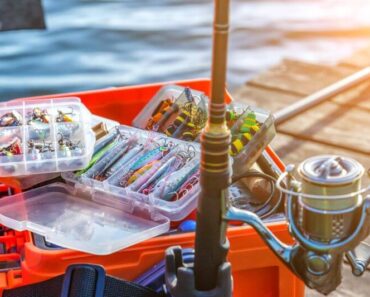When chaos strikes, survival often boils down to one thing: the right mindset. Sure, gear, tools, and supplies help. But if your brain short-circuits under pressure, all the prep in the world won’t save you. Staying calm is the compass that points you to safety. It’s about training your brain to think clearly even when chaos reigns. Here’s how to build that inner calm and face the storm (literal or metaphorical) with unshakable confidence.
Why Calmness Is Key
Panic is like quicksand. The harder you fight it, the deeper you sink. Staying calm allows you to think clearly and act effectively. When your brain spirals into fight-or-flight mode, decision-making suffers. Even worse, it can lead to dangerous mistakes.
The key is learning how to control your reactions. Take a moment to breathe, slow your heart rate, and assess the situation. You can’t control the chaos, but you can control how you respond.
The Role of Perspective
Perspective shifts can change everything. The way you interpret a challenge often determines how you respond to it. When you see a situation as a threat, fear takes center stage. Your heart races, your palms sweat, and rational thoughts go out the window. However, reframing challenges as opportunities can shift your mindset from panicking to problem-solving. Think of each challenge as a chance to grow stronger, smarter, and more prepared for whatever comes next.
This mental adjustment isn’t just motivational fluff. It’s actually rooted in psychology. Studies show that viewing stress as a tool rather than an enemy can improve performance and reduce anxiety. For example, instead of focusing on the discomfort of being lost, consider it as a chance to test your navigation skills. Framing a power outage as an inconvenience? Flip the script and take it as an opportunity to practice living off the grid. This small shift in perspective helps you think clearly, stay calm, and keep fear at bay.
Train Your Mind Before Disaster Strikes ♂️
Preparation isn’t just about stockpiling gear. It’s also about training your brain. The more you practice handling pressure, the better you’ll perform when the time comes. Here’s how to build mental strength:
Start Small
Face small challenges regularly to build mental resilience. It could be as simple as tackling a tough project at work or trying a new skill. Over time, your ability to stay composed under stress grows.
Visualize Success
Athletes swear by visualization, and it works for survivalists, too. Picture yourself calmly handling different scenarios and imagine taking the right steps without panic. That way, when the real deal happens, your brain already has a game plan.
Controlled Exposure
Try safe but stressful activities, like rock climbing or public speaking. These experiences teach your brain to stay calm, even when your pulse is pounding.
In the Heat of the Moment
Alright, so things just went sideways. Maybe it’s a sudden storm, maybe you’re lost, or maybe an unexpected development has you cornered. In the heat of the moment, every decision counts. Here’s how to how to steady your nerves and take control of the situation like a pro:
Breathe, Literally
Deep breaths are a game-changer. Inhale through your nose for four counts, hold for four, and exhale for four. This slows your heart rate and interrupts panic signals.
Focus on the Now
Don’t let your brain spiral into “what ifs.” Instead, focus on what you can control at the moment. Prioritize safety, assess your surroundings, and decide on the next step.
Talk Yourself Down
Words are powerful, even the ones in your head. Replace panicked thoughts with calm affirmations like, “I’ve got this” or “One step at a time.”
Building Mental Fortitude for the Long Haul
The calmest people during emergencies usually have one thing in common: they’re prepared for the worst. If you want to survive pressure, invest in mental training. Here’s how you can train your mind to stay strong, steady, and ready for anything:
Routine and Familiarity
Sticking to routines can help during a crisis. Even something as simple as setting up camp the same way every time gives your brain a sense of control.
Embrace the Suck
Navy SEALs use this phrase to describe leaning into discomfort. The more you expose yourself to tough situations, the easier it becomes to handle the unexpected.
Adaptability Is Survival
Being rigid in your thinking can be a death sentence. Stay flexible. If Plan A fails, move to Plan B without missing a beat.
Your Survival Toolbox ️
Calm isn’t just a mindset. It’s a skill. Here’s a quick survival toolbox for your brain:
- Grounding Techniques: Use your senses to stay present. For example, name five things you can see, four you can touch, three you can hear, two you can smell, and one you can taste.
- Prioritize: Ask yourself, “What’s the most important thing to do right now?”
- Micro-Goals: Break tasks into bite-sized steps. Complete one, then move to the next.
- Confidence Boosters: Reflect on past successes. Remind yourself you’ve survived challenges before.
Preparedness Starts Within
Staying calm under pressure isn’t just about bravery—it’s about practice, preparation, and perspective. When you train your mind to handle stress, you turn chaos into clarity. Whether you’re lost in the woods or weathering a storm, calmness will always be your greatest ally. Start practicing now. Build your mental toolkit today so that when life throws its worst at you, you can give it your best.
FAQs : Staying Calm Under Pressure
- How can I practice staying calm daily?
Start with mindfulness or meditation. Face small challenges intentionally. - Why does panic feel uncontrollable?
It’s your body’s fight-or-flight response. Deep breaths can override it. - What if I freeze during a crisis?
Acknowledge the freeze, focus on breathing, and take one small action to regain control. - Can stress be good for survival?
In small doses, yes. It sharpens focus and heightens awareness. - How do I prepare kids for emergencies?
Teach them simple plans and practice drills regularly. - Does training really make a difference?
Absolutely. Repetition helps your brain react calmly. - Are there any mental exercises for calmness?
Visualization, mindfulness, and grounding techniques all help. - How can I calm others in a crisis?
Stay calm yourself. Speak slowly and provide clear instructions. - What’s the best way to handle a group during a crisis?
Assign roles and keep communication steady. - How do I stay calm when I’m alone?
Use grounding techniques and focus on the next actionable step.





![Govt. Overreach, Lockdowns, and WW3 [PODCAST] Govt. Overreach, Lockdowns, and WW3 [PODCAST]](https://survivalcove.com/wp-content/uploads/2021/11/survival-preppers-podcast-banner-370x297.jpg)



![Kevin Estela and the Flip Flop BBQ Guy | Grilling Technique [PODCAST] Kevin Estela and the Flip Flop BBQ Guy | Grilling Technique [PODCAST]](https://survivalcove.com/wp-content/uploads/2021/10/Packing-Goats-Hunting-Survival-370x297.jpg)




















